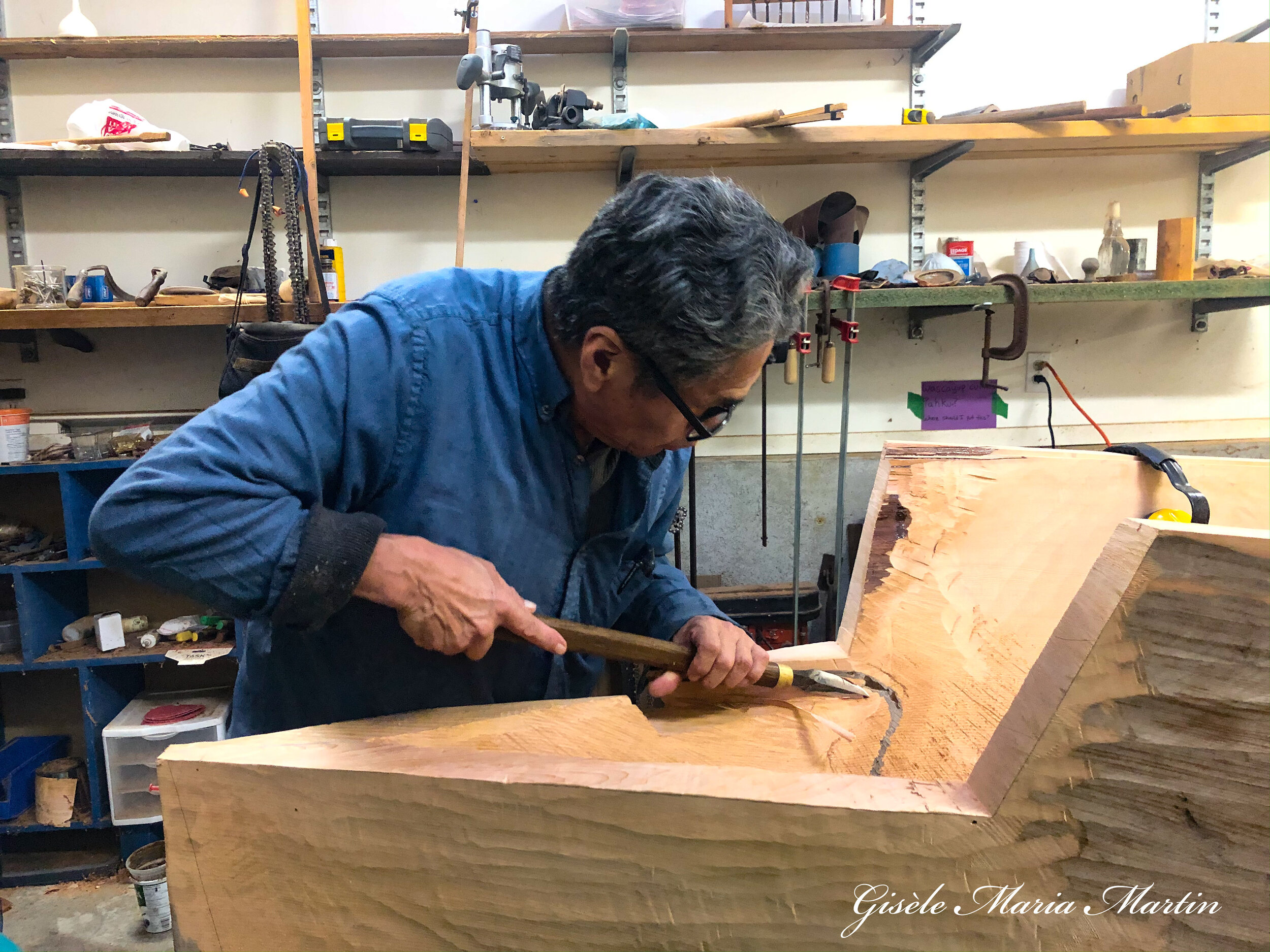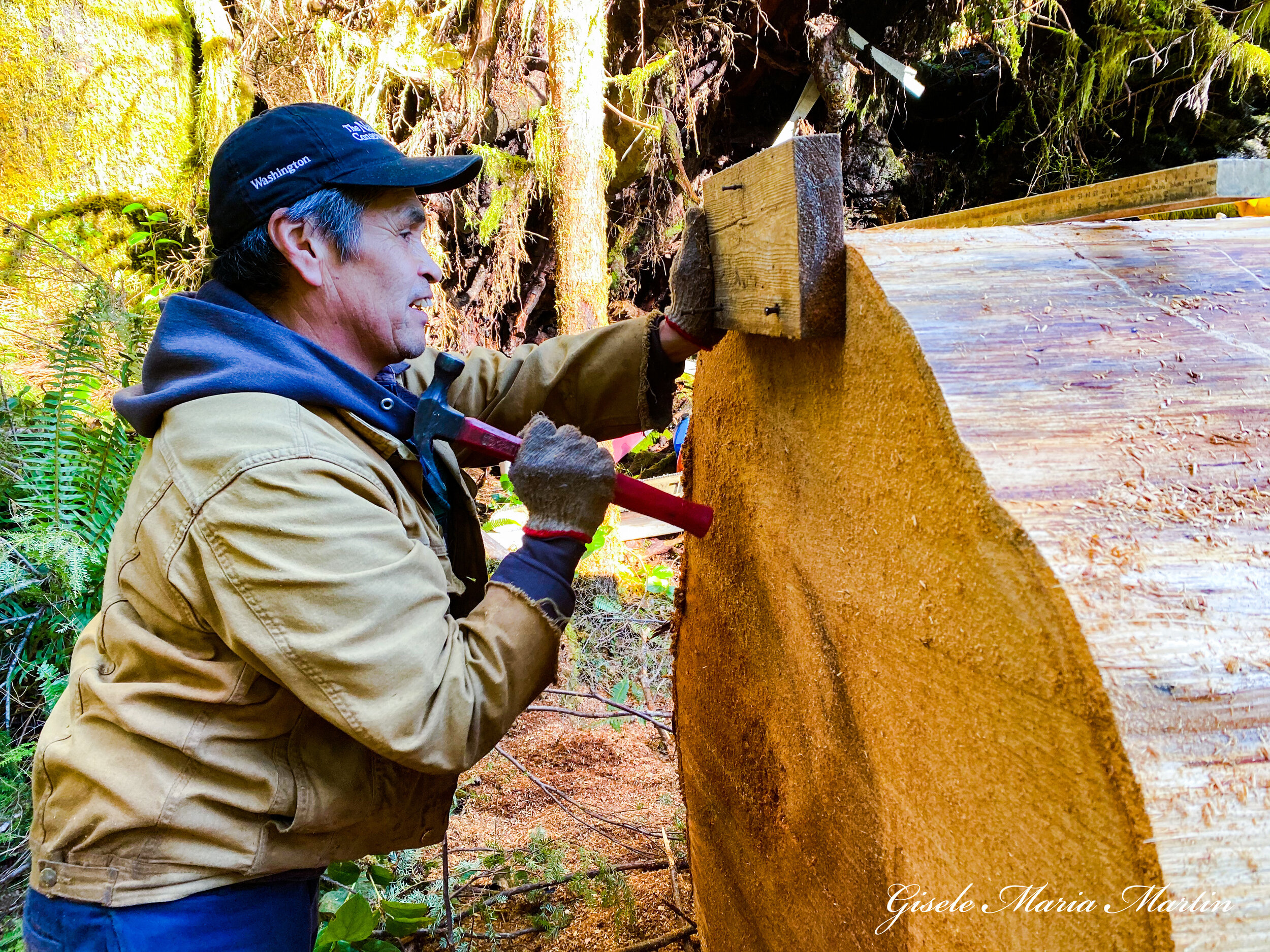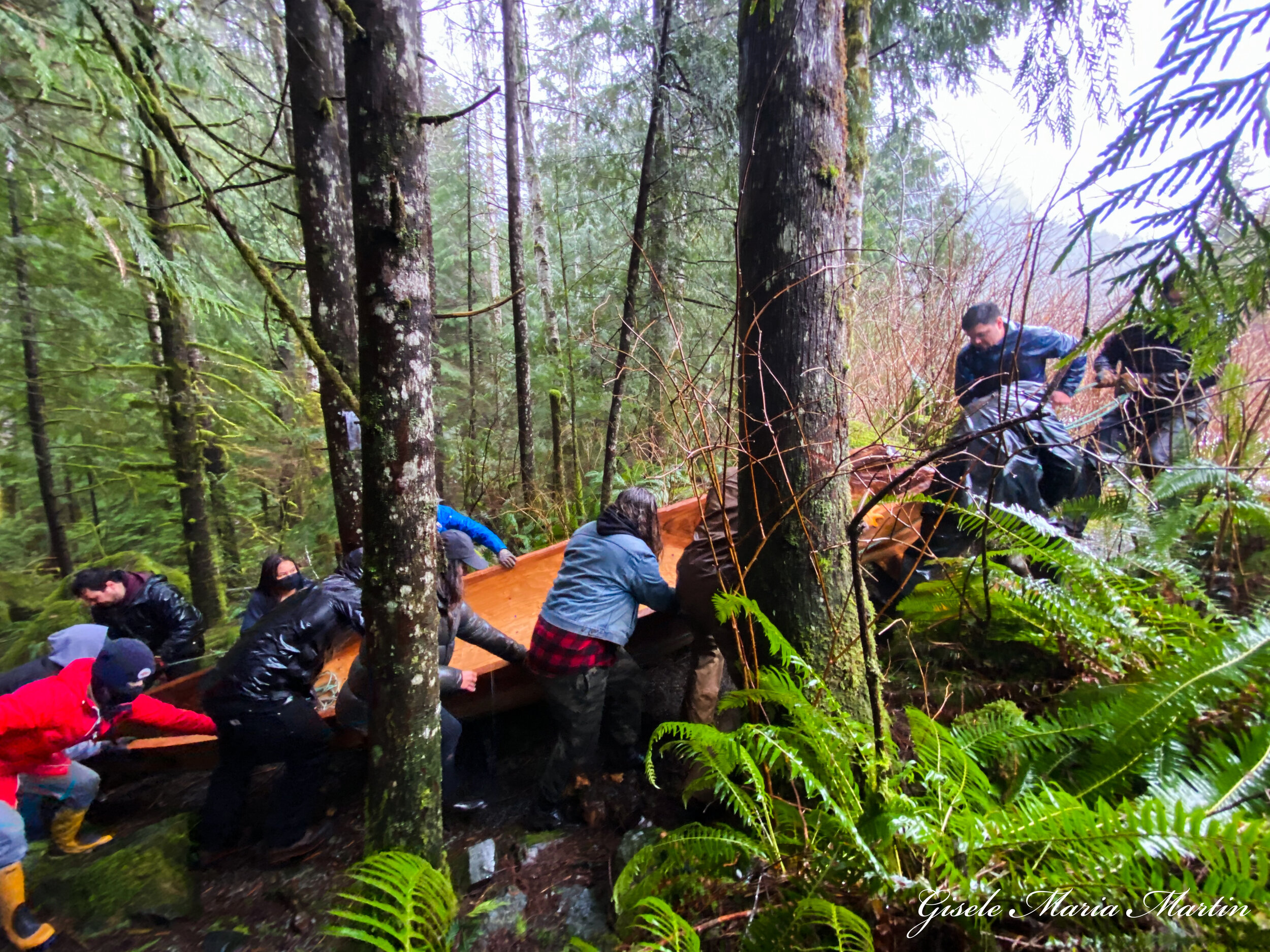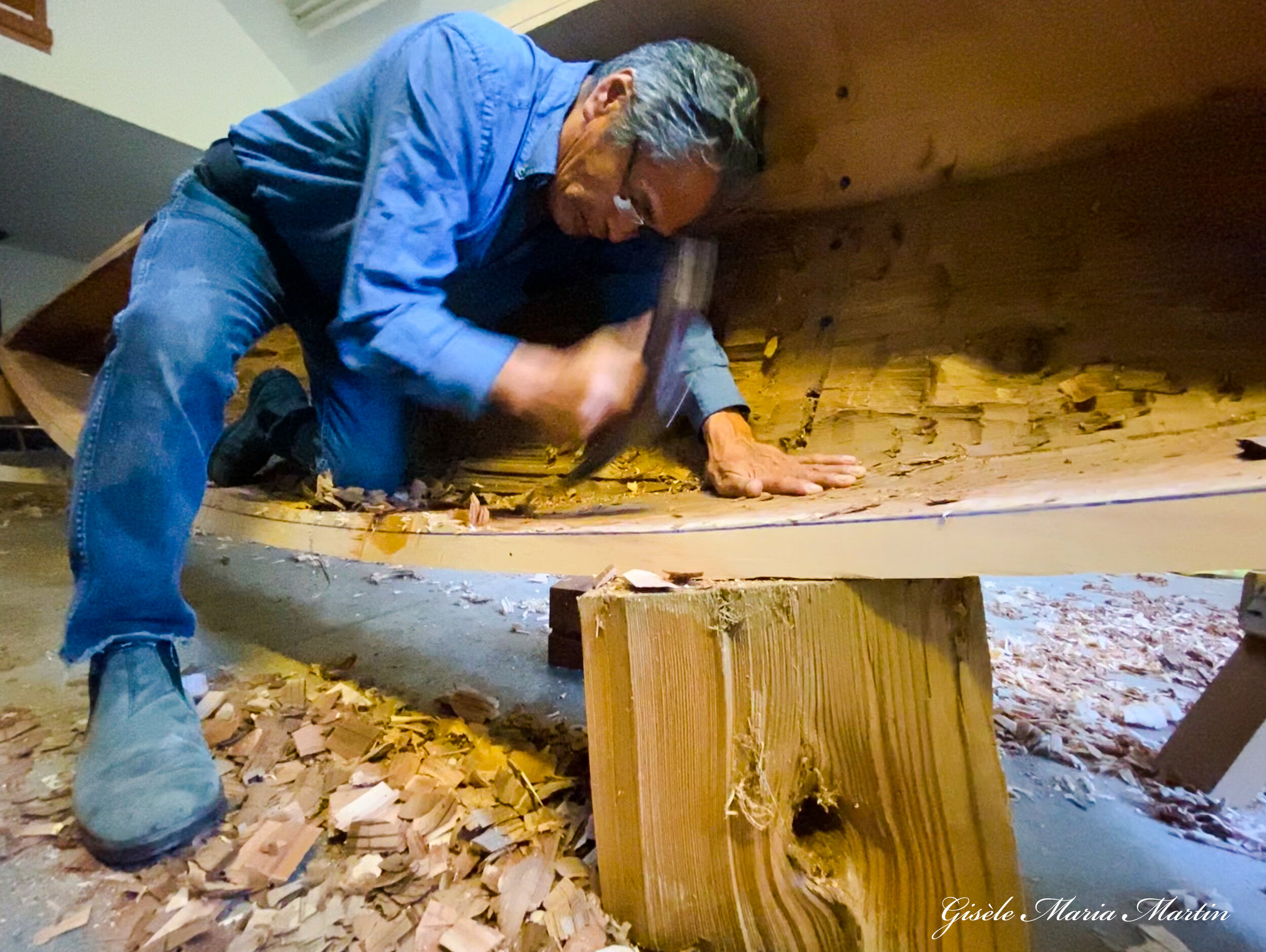Dugout Canoe








Please stay at this location to complete the MUP Art Walk and view the painted surfboard on display.
Tofino area master carver Joe Martin is one of five First Nations artists honoured by the BC Achievement Foundation, an independent foundation established and endowed by the Province of BC in 2003 to celebrate community service, arts, humanities, and enterprise.
Joe’s traditional Nuu-chah-nulth dugout canoes can be seen on display here at the Tofino Visitor Information Centre, the Wickaninnish Inn, Na’aWaya’Sum Gardens, and internationally.
This conversation was recorded at his Monk’s Point studio while he was working on his latest dugout canoe. He also works from his “studio in the forest”.
Na’aWaya’Sum Gardens is graced with an exquisite example. This type of 16-foot canoe, still used for local travel and fishing up the inlet, is of the same design used for as long as the people can remember to accommodate “the many moods of the Pacific Ocean”.
Joe Martin began learning his craft from his father, Robert Martin, Sr., as a young boy while spending time with him and with his brothers out on the land and on the water. The process begins with the selection of a Western Red Cedar, and with the carver asking the Creator permission to harvest the wood. These trees are often 400-800 years old and may be blowdowns or if standing, must not be home to an eagle’s nest. The cedar log used for this canoe, Joe Martin explains, was salvaged after it floated away from a bridge at Kennedy River, where it had provided support for 30-40 years.
Created over two weeks, once the hull was dug out, it underwent a steaming process with heated rocks to increase its flare. The bow and stern were added before the canoe was steamed. Joe Martin demonstrates the cedar plugs of one- or two-inch length which are placed in strategic places on the hull as a means to acquire uniform thickness. After finishing with an adze and sanding, the interior is stained red to represent the colour of life and the outside singed black and polished. White stripes painted on bow and stern offer peace when traveling through another Nation’s territory. Larger versions of this dugout canoe are used for tribal journeys which are bringing people together on the water as they travel to a common destination.
After a blessing ceremony where it received its unique name, this canoe was first launched and tested on local waters before being sited in the gardens. Martin restored it 20 years later and built the shelter to house it and the interpretive panel, written by his daughter Tsimka Martin and translated into the Nuu-chah-nulth language by his daughter Gisele Martin. This panel highlights a resurgence in canoe carving, which Joe Martin is an integral part of, and the timeless role of the dugout as a source of Nuu-chah-nulth pride.
Thank you to Joe Martin, and his daughters Tsimka and Gisele Martin, for sharing traditional Tla-o-qui-aht knowledge.

